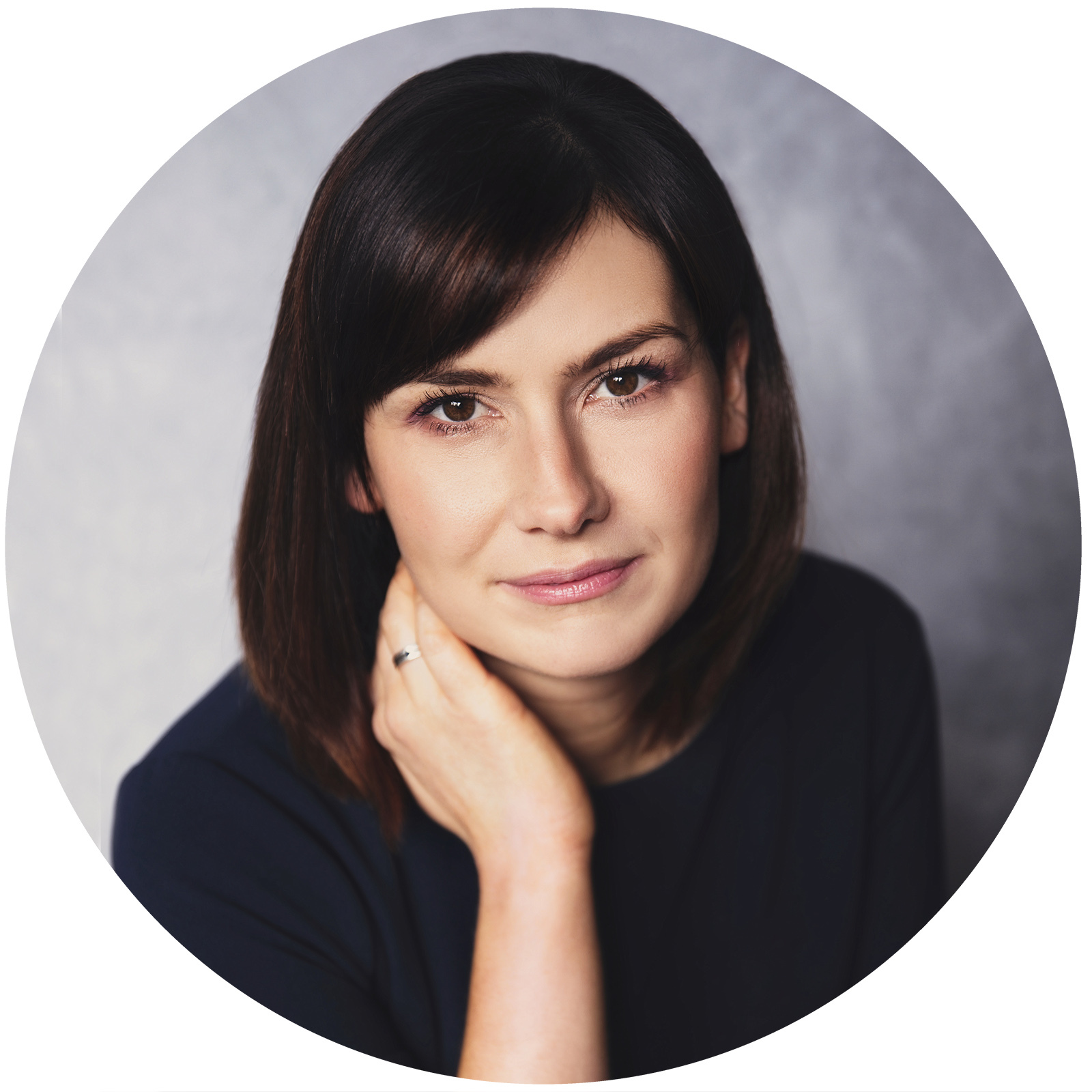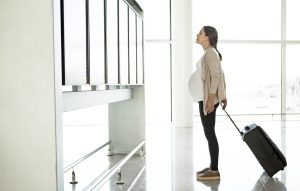
Urodzić naturalnie po cesarce. „Wiele zależy od chęci, bo poród zaczyna się w głowie” – mówi o VBAC położna Katarzyna Osadnik
Ewa Podsiadły-Natorska: Dlaczego wśród wielu kobiet pokutuje przekonanie, że „raz cesarska, zawsze cesarka”?
Katarzyna Osadnik: Ja bym przede wszystkim zapytała, dlaczego takie przekonanie pokutuje wśród personelu medycznego.
Właśnie, dlaczego?
To złożony problem. Wielu lekarzy oraz wiele położnych uważa, że kolejne cięcie cesarskie to jedyna bezpieczna droga przyjścia na świat dziecka po uprzednim CC. I to przechodzi na matki. Inna rzecz, że Polki są straszone porodem naturalnym po CC. W naszym kraju edukacja przedporodowa jest na niskim poziomie, wskutek czego ani pacjentki, ani lekarze nie opierają się na bieżących zaleceniach.
A jakie one są?
Aktualne zalecenia mówią o tym, że kolejny poród po wcześniejszej cesarce powinien odbyć się siłami natury. To są zalecenia Amerykańskiego Kolegium Położników i Ginekologów (ACOG), ale również towarzystwa brytyjskiego oraz kanadyjskiego. Nawet Polskie Towarzystwo Ginekologów i Położników zaleca, aby dążyć do porodu SN po CC.
Powiedziała pani, że kobiety są straszone porodem naturalnym po cięciu cesarskim. Co im się mówi? Że nie dadzą rady?
Tak, to również. Przede wszystkim jednak matki słyszą, że w trakcie akcji skurczowej pęknie im macica. Umrą one i dziecko. Tymczasem ryzyko pęknięcia macicy podczas porodu SN po wcześniejszym CC wynosi 0,07 proc., czyli występuje u bardzo niewielkiego odsetka kobiet. Natomiast rozejście się blizny po CC podczas kolejnego porodu SN to tylko 0,5 proc. przypadków. Oznacza to, że tak naprawdę mamy 99,5 proc. szans na to, że macica podczas porodu SN przetrwa.
Skąd więc przekonanie o możliwym pęknięciu macicy, skoro to są tak rzadkie przypadki?
Na pewno ma to związek z historią i dawnym sposobem przeprowadzania CC. Cesarka jest stosunkowo świeżą procedurą, którą z dużym powodzeniem zaczęto wykonywać dopiero w XX wieku. Początkowo, to znaczy w drugiej połowie XIX wieku, przeżywalność kobiet rodzących w ten sposób była bardzo niska. Dopiero z czasem zabieg stał się bezpieczny i okazał się opcją przede wszystkim dla ciąż powikłanych. Należy jednak pamiętać, że kiedyś CC wykonywano odmienną techniką: inaczej się macicę nacinało i ją zszywało.
Przypominam sobie artykuł, który pisałam o historii cesarskich cięć. Pamiętam z materiałów źródłowych, że przez długi czas kobietom po CC zszywano jedynie powłoki brzuszne, a nie macicę, wskutek czego dochodziło do krwotoku wewnętrznego i kobiety umierały.
To prawda. W przeszłości, kiedy CC nie były tak bezpieczne jak dziś, mogły istnieć uzasadnione obawy, że podczas kolejnego porodu, tym razem SN, dojdzie do groźnych powikłań takich jak pęknięcie macicy. Teraz to są skrajnie rzadkie przypadki.
A jednak dostrzega pani opór w kobietach przed VBAC.
Powodów tego oporu jest wiele. Poród SN bardzo często kojarzy się z niesamowitym bólem. Kobiety wychodzą z założenia, że poród naturalny jest doświadczeniem traumatycznym. CC wydaje się wtedy ratunkiem od bólu porodowego. Ale nie należy zapominać, że CC też wiąże się z bólem. Tyle że nie doświadczamy przed narodzinami dziecka, a dopiero po porodzie. W zasadzie każda kobieta po cesarce przyzna, że stosowała leki przeciwbólowe. Raz ten ból oczywiście kończy się wcześniej, a innym razem – później. Tymczasem w przypadku porodu SN akcja skurczowa trwa średnio 12–17 godzin, z czego mocny ból odczuwany jest przez jedną trzecią tego czasu.
Poród jest bardzo intymną sytuacją i my jako matki potrzebujemy wsparcia doświadczonych osób, szczególnie położnych. Oczekujemy, że pomogą nam uporać się z bólem i sprawią, że poród będzie bezpieczny. A przecież rodząc SN, zwykle nie wiemy, na kogo trafimy.
Może więc kobiety chcą kolejnego CC, bo mają w tym zakresie doświadczenie. Wiedzą, czego się spodziewać.
Po części na pewno tak jest. CC jest o tyle komfortowe, że umawiamy się na konkretny dzień, w którym poród ma się odbyć, a zabieg bardzo często wykonuje lekarz, który przez dziewięć miesięcy prowadził naszą ciążę. Tymczasem poród naturalny ma to do siebie, że nie da się go zaplanować. Wiele kobiet nie ma też świadomości, że poród SN może być doświadczeniem dobrym i wzmacniającym. W naszej grupie wsparcia na Facebooku „Naturalnie po cesarce” są matki, które kolejne dziecko chcą urodzić SN pomimo wcześniejszego CC – z różnych przyczyn. Jednocześnie nie brakuje kobiet, które w ogóle nie wyobrażają sobie porodu SN.
A skąd niechęć w lekarzach?
Przybywa lekarzy, który zdają sobie sprawę, że jeśli coś pójdzie nie tak, to mogą zostać oskarżeni o błąd w sztuce medycznej. Personel medyczny wychodzi z założenia, że lepiej zrobić o jedno cesarskie cięcie za dużo niż za mało. Czasem słyszy się przecież o przypadkach, że poród odbył się SN, podczas gdy istniały ewidentne wskazania do przeprowadzenia CC.
Położnictwo jest sztuką łączenia doświadczenia i wiedzy. Wiem, że kobiety często nawet nie podejmują próby porodu VBAC, bo obawiają się reakcji personelu medycznego.
Razem z Magdaleną Hul napisała pani książkę „Cesarskie cięcie i poród po cięciu cesarskim”, w której przekonujecie, że poród naturalny po cesarce jest możliwy.
Według światowych statystyk szanse powodzenia porodu VBAC to ok. 70 proc. Pod tym względem nastąpiła bardzo duża poprawa. Kiedy zaczęłam robić własne statystyki w 2017 roku, opierając się na kobietach zrzeszonych w naszej grupie „Naturalnie po cesarce”, liczba udanych porodów SN po wcześniejszym CC wynosiła ok. 60 proc. Na szczęście zmienia się świadomość zarówno kobiet, jak i personelu medycznego, mimo wszystko coraz więcej szpitali jest przyjaznych porodowi naturalnemu po CC – i stąd efekty. W zeszłym roku ponad 700 kobiet z naszej grupy podjęło próbę porodu naturalnego po cesarce. Oczywiście w porównaniu do wszystkich porodów odbywających się w Polsce mówimy o ułamku rodzących, ale to pokazuje, że są kobiety, które chcą się z tym zmierzyć. Ze statystyk wynika nawet, że jeśli kobieta miała jeden poród naturalny i jedną cesarkę, to ma aż 95 proc. szans na urodzenie trzeciego dziecka SN. Dzięki temu unika się długofalowych skutków CC – i dla matki, i dla dziecka. Coraz więcej jest też kobiet, które rodzą naturalnie po dwóch CC. Tutaj statystyka powodzenia oscyluje w granicy 50–60 proc.
Czy dobrze rozumiem, że – pomijając kwestie medyczne – kluczowa jest tutaj motywacja kobiety do VBAC?
Zdecydowanie, zwłaszcza że bardzo często lekarz mający pod opieką kobietę po CC z góry zakłada, że kolejny poród odbędzie się tą samą drogą. I bardzo często jest zaskoczony pozytywnie, kiedy to kobieta wychodzi z inicjatywą, mówiąc, że chciałaby urodzić naturalnie.
Czyli konieczny jest lekarz, który będzie na tę kwestię otwarty.
Tak, my w naszej grupie robimy zestawienia lekarzy, który są pro-VBAC, sceptyczni oraz całkowicie niechętni.

Katarzyna Osadnik /fot. Małgorzata Kozłowska
Macie odzew ze strony matek, które urodziły naturalnie po CC?
Jak najbardziej, w grupie „Naturalnie po cesarce” pojawiają się posty, w których kobiety cieszą się: „Udało mi się urodzić naturalnie po cesarce”. Ja sama pracuję w szpitalu, który wspiera porody naturalne po CC i widzę, jak to się odbywa, a przede wszystkim jaką kobiety mają satysfakcję z porodu SN. Bywa również, że muszę taką matkę przytulić i pocieszyć, bo poród naturalny jednak się nie udał i znowu doszło do CC. Moją rolą jest zapewnić kobietę, że zrobiła wszystko, co mogła, aby urodzić dziecko SN.
Jakie słowa najczęściej padają z ust matek po porodzie VBAC?
Najczęściej: „Nie wierzę, że to zrobiłam!”.
A jakie są przeciwwskazania do próby porodu SN po CC?
Przede wszystkim jeżeli obserwujemy w USG rozchodzącą się bliznę, co może mieć miejsce kilka tygodni przed porodem. Wtedy staramy się, żeby poród przebiegał bezpiecznie, więc nie chcąc obciążać macicy, rekomendujemy kolejne CC. Natomiast jednym z głównych przeciwwskazań do porodu SN jest brak akceptacji takiej formy porodu przez matkę. Bo jeśli ona nie chce porodu naturalnego, nie akceptuje tej formy, to nie mamy wielkiego pola manewru. Pozostałe przeciwwskazania do podjęcia próby porodu SN po CC to: przebyte pęknięcie mięśnia macicy; stan po cesarskim cięciu klasycznym, czyli pionowe nacięcie macicy, od pępka w dół; ogólne przeciwwskazania do porodu drogami natury: łożysko przodujące, nieprawidłowe położenie płodu czy wskazania pozapołożnicze.
Czy poród SN po CC jest obarczony większym ryzykiem dla rodzącej niż kolejna cesarka?
Nie, choć taki panuje stereotyp. Warto wiedzieć, że nawet ryzyko zgonu matki po kolejnym CC jest wyższe niż po próbie porodu SN. Podobnie ryzyko transfuzji krwi jest wyższe podczas powtórnego CC niż przy próbie porodu SN bądź przy udanym VBAC. To nie jest więc dla matki tak ekstremalne wyzwanie, jak mogłoby się wydawać. Dziecko po VBAC też łatwiej adaptuje się do warunków zewnętrznych – np. zaburzenia oddychania są u niego pięciokrotnie wyższe w przypadku planowanego CC niż w przypadku próby porodu SN.
Czy do porodu SN po CC można się przygotować? W jaki sposób?
Przede wszystkim należy dowiedzieć się, jakie były przyczyny pierwszego CC. Jeżeli decyzja została podjęta w trakcie porodu, warto ustalić, co takiego się stało, że doszło do cesarki. Nieraz kobieta ma potrzebę przepracowania nieudanego porodu SN i tutaj wskazana okazuje się pomoc psychologa. Do tego istotna może być praca z fizjoterapeutą uroginekologicznym, który będzie pracował ze zrostami, które mogą się pojawić po jednym CC, a im więcej cięć za nami, tym ryzyko zrostów staje się większe. Dla kobiety pomocny może okazać się ponadto wybór konkretnej położnej (tzw. indywidualna opieka okołoporodowa), która przyjmie jej poród.
W waszej grupie „Naturalnie po cesarce” kobiety korzystają z pomocy psychologów?
Tak i nam o tym piszą. Dla części kobiet poród SN jest wyzwaniem, marzeniem. Czymś, z czym chcą się zmierzyć. Chcą podjąć tę próbę. I kiedy dochodzi do CC, to jakieś oczekiwanie nie zostaje zaspokojone. Te kobiety mają problem z zaakceptowaniem faktu, że ich plan się nie zrealizował. A poczucie, że się nie dało rady, wpływa negatywnie na ich samoocenę.
Dla części kobiet poród SN jest naturalnym wejściem w macierzyństwo, ważnym elementem ich życia oraz kobiecości. Nie należy ich za to krytykować, tak samo jak nie należy krytykować kobiet, które wybrały CC.
Źródła:
Katarzyna Osadnik – położna, wiceprezeska Stowarzyszenia Dobrze Urodzeni, administratorka w grupie na Facebooku „Naturalnie po cesarce – grupa wsparcia”, współautorka książki „Cesarskie cięcie i poród po cięciu cesarskim” (wyd. Natuli 2020). Aktywnie wspiera kobiety na ich macierzyńskiej drodze. Mama Antosi, Igi i Frania.




































